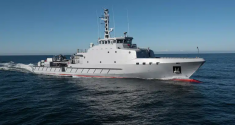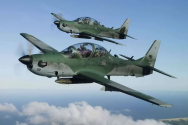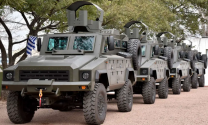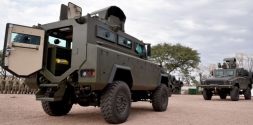Miragedriver
Brigadier
F-16 or JF-17 for Argentina
Almost a week and a half ago, the threats flew from Washington to Buenos Aires. That a Chinese fighter production in Argentina is a very bad idea, said US representative María Elvira Salazar. According to Salazar, Buenos Aires intends to produce the JF-17. She described these intentions as a "deal with the devil."
Salazar affirmed that the agreement was already a fact and she pointed out which senior Argentine political officials had closed it. According to her, it is President Alberto Fernández and Vice President Cristina Fernández de Kirchner [CFK]. The Florida congresswoman continued with the threatening tone, stating that if Argentina installs an FJ-17 fighter factory "the consequences will be biblical." Salazar said that Washington will not allow it and that it will not sit idly by.
What does Argentina need?
The Argentine Air Force is not effective under current conditions. The equipment is old. In their inventory, the “gauchos” have long-obsolete American A-4 Fighting Skyhawks and locally produced IA-63 Pampa light attack jets/Trainer.
According to the media, Argentina had three options: F-16 Fighting Falcon, JF-17 Thunder and MiG-35 Fulcrum-F. For some reason, the Russian fighter suddenly stopped being discussed as an option. Only the American and Chinese representatives remained.
In recent months, however, the possibility of the F-16 being the fighter of choice for Buenos Aires has been increasingly discussed in the media. First, representatives from Lockheed Martin visited Argentina in February. Military personnel from Denmark also traveled with them, as Buenos Aires is believed to be interested in the Danish F-16s. If this agreement were carried out, Argentina would effectively acquire second-hand fighters. But if the F-16's advantages are based on these facts alone, we should point out that Argentine Defense Ministry representatives also met with the Chinese manufacturers of the JF-17, and even got to know the production facilities.
The role of Great Britain
Until now, Argentina could not afford the acquisition of new combat aircraft due to the arms embargo imposed by Great Britain as a consequence of the Falklands War. But the last three decades have brought new fighter jet manufacturers to the map: China, India, Pakistan [along with China] and South Korea. Even Turkey will soon join in and break the “monopoly” of Russia, the United States and France.
London can no longer prevent the delivery of western fighters to Buenos Aires. The Chinese JF-17 is the closest in terms of capabilities to the Argentines, both for the price and for overcoming Western barriers. Although the Chinese JF-17 fighter uses a British ejection seat for the pilot, Beijing has several options to get around the deterrents and integrate its own seats. Like the ones built into the J-20, for example.
For this reason, neither Argentina, nor the US, nor China have control over the situation of Argentine fighters. It is up to London to decide what to do: give the US and Denmark the green light to supply F-16s, ignoring the military embargo on Argentina, or secure Chinese influence in Latin America. This time, however, it will be bigger because Argentina will be able to not only produce budget-competitive fighters, but also sell them in the region.
Almost a week and a half ago, the threats flew from Washington to Buenos Aires. That a Chinese fighter production in Argentina is a very bad idea, said US representative María Elvira Salazar. According to Salazar, Buenos Aires intends to produce the JF-17. She described these intentions as a "deal with the devil."
Salazar affirmed that the agreement was already a fact and she pointed out which senior Argentine political officials had closed it. According to her, it is President Alberto Fernández and Vice President Cristina Fernández de Kirchner [CFK]. The Florida congresswoman continued with the threatening tone, stating that if Argentina installs an FJ-17 fighter factory "the consequences will be biblical." Salazar said that Washington will not allow it and that it will not sit idly by.
What does Argentina need?
The Argentine Air Force is not effective under current conditions. The equipment is old. In their inventory, the “gauchos” have long-obsolete American A-4 Fighting Skyhawks and locally produced IA-63 Pampa light attack jets/Trainer.
According to the media, Argentina had three options: F-16 Fighting Falcon, JF-17 Thunder and MiG-35 Fulcrum-F. For some reason, the Russian fighter suddenly stopped being discussed as an option. Only the American and Chinese representatives remained.
In recent months, however, the possibility of the F-16 being the fighter of choice for Buenos Aires has been increasingly discussed in the media. First, representatives from Lockheed Martin visited Argentina in February. Military personnel from Denmark also traveled with them, as Buenos Aires is believed to be interested in the Danish F-16s. If this agreement were carried out, Argentina would effectively acquire second-hand fighters. But if the F-16's advantages are based on these facts alone, we should point out that Argentine Defense Ministry representatives also met with the Chinese manufacturers of the JF-17, and even got to know the production facilities.
The role of Great Britain
Until now, Argentina could not afford the acquisition of new combat aircraft due to the arms embargo imposed by Great Britain as a consequence of the Falklands War. But the last three decades have brought new fighter jet manufacturers to the map: China, India, Pakistan [along with China] and South Korea. Even Turkey will soon join in and break the “monopoly” of Russia, the United States and France.
London can no longer prevent the delivery of western fighters to Buenos Aires. The Chinese JF-17 is the closest in terms of capabilities to the Argentines, both for the price and for overcoming Western barriers. Although the Chinese JF-17 fighter uses a British ejection seat for the pilot, Beijing has several options to get around the deterrents and integrate its own seats. Like the ones built into the J-20, for example.
For this reason, neither Argentina, nor the US, nor China have control over the situation of Argentine fighters. It is up to London to decide what to do: give the US and Denmark the green light to supply F-16s, ignoring the military embargo on Argentina, or secure Chinese influence in Latin America. This time, however, it will be bigger because Argentina will be able to not only produce budget-competitive fighters, but also sell them in the region.











